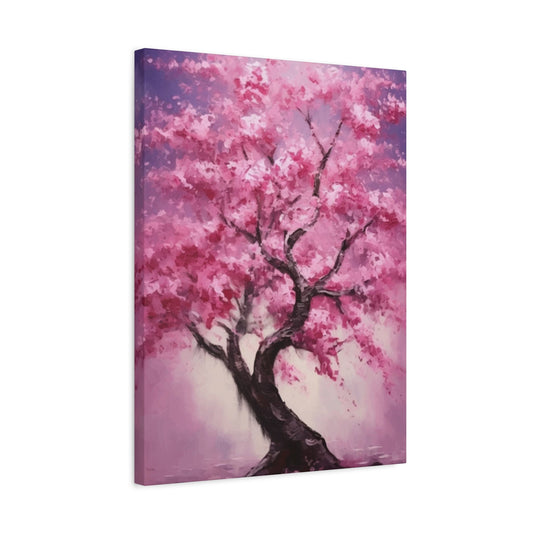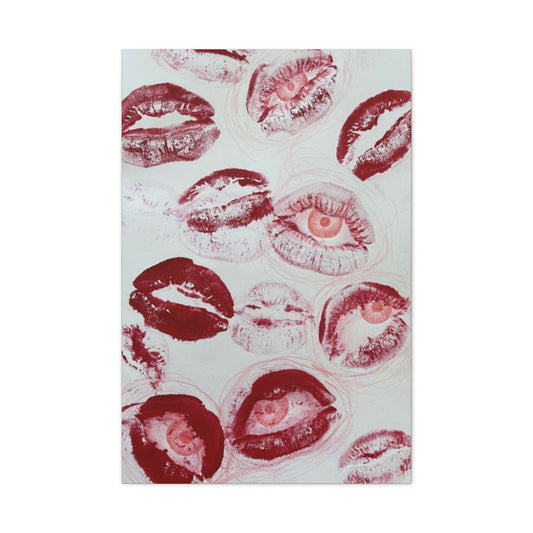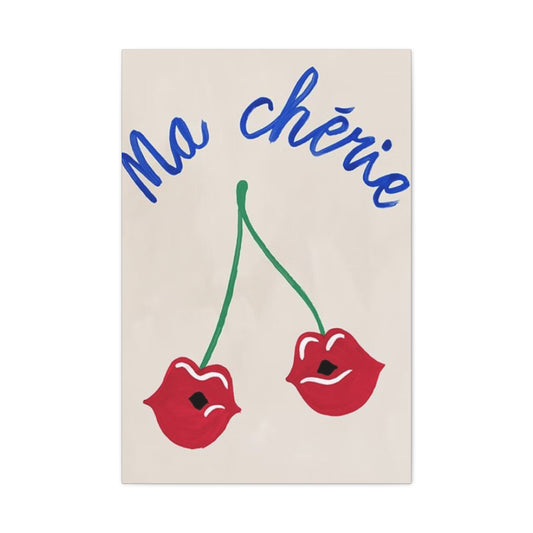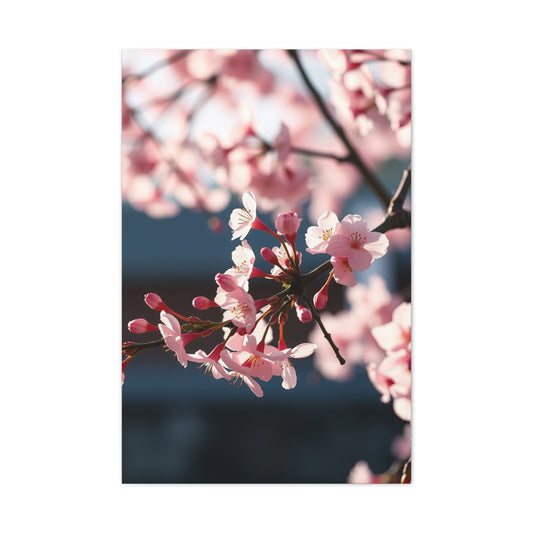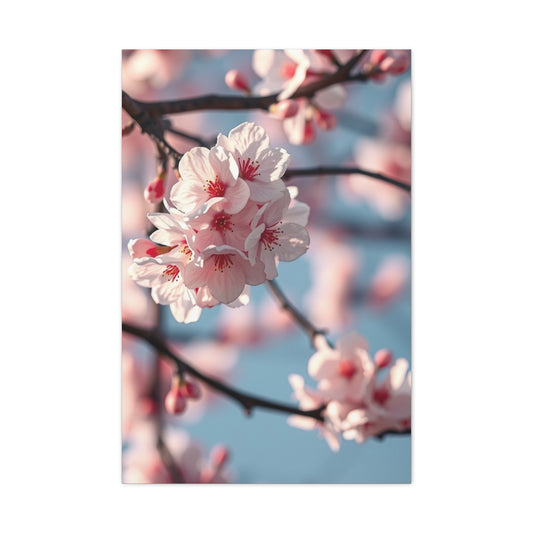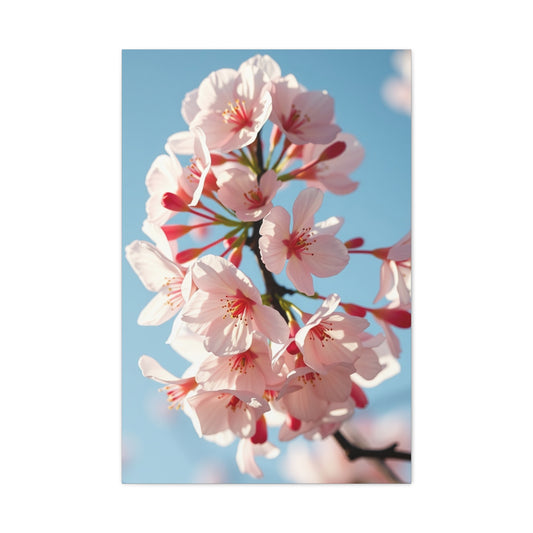The Fujifilm Instax Mini 8 remains a cornerstone of instant film photography even in 2025. Though newer models such as the Mini 12 and SQ1 have entered the market, many enthusiasts still prefer the Mini 8 for its approachable design, tactile shooting process, and the joy of immediate photo gratification. Its retro aesthetic combined with essential modern functionality creates a unique and enduring appeal that continues to draw users of all ages.
With only modest upgrades in subsequent models, the Instax Mini 8 has retained its reputation for being dependable, straightforward, and irresistibly fun. Whether you're diving into instant film for the first time or rediscovering analog joy, the Mini 8 delivers a hands-on experience that is difficult to replicate with digital devices.
Instant Film Made Easy: How the Mini 8 Captures Memories
The core philosophy of the Instax Mini 8 is immediate image creation. In a world dominated by digital technology, this instant camera offers something refreshingly different—a tangible photo, warm from the printer, moments after pressing the shutter. There's no editing, no re-takes, and no filters; just one shot, one print, one unique memory.
This approach not only makes every image special but also cultivates a sense of mindfulness. You’re encouraged to compose each frame with care, to be present, and to anticipate the outcome without relying on screen previews. That tactile, unpredictable, and emotional connection with each photograph is what continues to make instant cameras like the Mini 8 relevant.
Exploring the Appeal: Who Really Benefits from the Fujifilm Instax Mini 8?
The Fujifilm Instax Mini 8 is a camera designed to spark joy across generations. While it may seem like a toy at first glance, this instant camera has carved a special place in the hearts of users ranging from tech-savvy teens to nostalgic grandparents. Its vibrant aesthetic, intuitive controls, and instantaneous image output make it far more than a novelty—it’s a tool for memory-making that transcends age, background, and photography experience.
This universal charm is rooted in its ease of use. There are no convoluted settings, no digital menus, and no prior photography knowledge needed to get started. Whether you’re capturing candid moments at a family picnic or using it to create a visual diary of your travels, the Mini 8 is ready to perform right out of the box. And because it offers a tangible, physical result with every press of the shutter, it brings a sense of magic and permanence that smartphones and digital cameras simply can’t replicate.
|
Related Catagories: |
Let’s explore the various groups who continue to gravitate toward the Fujifilm Instax Mini 8 and why it remains a beloved companion in the world of instant film photography.
A Delight for Young Creators and Social Storytellers
Young users, particularly teens and early-twenties creatives, are drawn to the Instax Mini 8 for several reasons. First, the camera’s bold color options and retro-chic design resonate with aesthetic-conscious audiences who value personal style as much as functionality. It doubles as both a visual accessory and a storytelling device—making it as appealing to display on a bookshelf as it is to take on adventures.
In an era dominated by digital filters and online sharing, the Instax Mini 8 offers something refreshingly tangible. Young photographers use it not only for personal snapshots but also for artistic projects, journaling, and crafting. Decorating dorm rooms, building friendship albums, or creating mood boards with real prints introduces an element of creativity and personalization that digital galleries often lack.
The size and simplicity of the camera make it ideal for school events, parties, and road trips. It’s lightweight enough to carry in a tote or backpack and sturdy enough to survive a little rough handling. And because it prints photos immediately, there’s no waiting for uploads or editing—just one moment captured, and then held in your hand.
It also encourages mindfulness in photography. With only 10 shots per film pack, users become more selective and intentional about what they shoot. This results in a richer connection to the captured moment and adds meaning to each photo.
A Heartwarming Gift for Families and Life Events
For parents, grandparents, and family-oriented users, the Instax Mini 8 represents a way to bond through photography. It’s easy enough for a child to use under supervision, yet charming and nostalgic enough to appeal to adults who remember the heyday of film cameras. Many families find joy in using the camera during milestone events—birthdays, baby showers, family reunions, or even quiet afternoons at home.
Because the Instax Mini 8 doesn’t require a smartphone or Wi-Fi, it offers a break from screen time. Children especially love watching the photo develop, treating it almost like a magic trick. Parents enjoy the reliability of a device that doesn't involve complicated technology, while grandparents appreciate the return to a format they grew up with.
Weddings and special gatherings are also where the camera shines. Couples often place Instax cameras on guest tables with blank albums and markers. Guests take candid shots, write messages, and leave them behind as part of a guestbook filled with real moments. This simple activity results in a one-of-a-kind keepsake, rich with personality and emotion—something a hashtag simply can’t replicate.
For gift-giving, it checks all the boxes: useful, stylish, playful, and meaningful. Whether wrapped up for a holiday, birthday, graduation, or as a “just because” surprise, the Mini 8 makes a thoughtful present that will likely see plenty of use and love.
Ideal for Travelers, Creatives, and Sentimental Souls
Beyond casual users, the Instax Mini 8 has also found favor among travelers and artistic professionals. Its instant print feature allows for the creation of visual travel journals, where users tape prints into notebooks alongside handwritten notes, maps, or tickets. This form of scrapbooking brings a tactile element to documenting adventures and turns every trip into a storytelling opportunity.
Creatives across various disciplines use the Mini 8 as part of their process. Writers, illustrators, and visual designers often use it to create mood boards or capture references in real time. Event planners and stylists use it for lookbooks, capturing decor setups or color schemes in natural light. Its compact form and intuitive nature mean it can go wherever inspiration strikes.
The sentimental value it offers is arguably its strongest asset. In a world that increasingly emphasizes digital minimalism and ephemeral content, having a physical photograph in hand feels grounding. Holding a memory—on paper, with texture and borders—invites reflection and appreciation in a way a scrolling feed does not.
And for those who have experienced the loss of images to broken phones or crashed hard drives, the permanence of a physical photo is deeply comforting. Each snapshot from the Instax Mini 8 becomes an artifact, not just an image. Whether kept in an album, pinned to a wall, or tucked inside a book, the photo becomes a personal treasure.
An Instant Camera That Transcends Trends
Despite being several years old, the Fujifilm Instax Mini 8 continues to feel current in its own charming way. The rise of retro-inspired technology and analog creativity has kept it relevant, while its straightforward user experience has made it accessible to all. From kids documenting their school year to grandparents preserving family gatherings, the camera finds a place in every household and every heart.
Its enduring popularity can be attributed to its unique ability to create immediate, physical memories with minimal effort. There's no cloud storage, no screen preview, no perfectionism—just the joy of pressing a button and watching a real photograph emerge in seconds. In a world that constantly moves faster, the Mini 8 encourages slowing down and appreciating the beauty of the moment.
For anyone considering a return to tactile photography or looking to share an analog experience with someone else, the Instax Mini 8 remains one of the most rewarding tools available. It’s not just a camera; it’s a catalyst for connection, a creative companion, and a keeper of memories in the purest form.
Understanding the Fixed Lens of the Fujifilm Instax Mini 8
The Fujifilm Instax Mini 8 is a celebration of simplicity, and at the heart of its design is its 60mm fixed-focus lens. Unlike interchangeable lens cameras or zoom-enabled models, the Mini 8’s lens is purposefully minimalistic. This fixed prime lens is non-adjustable and offers a moderate focal length suited for everyday scenes, portraits, and snapshots. What may seem limiting to some actually becomes one of the camera’s greatest strengths—it eliminates distraction and brings back the essence of pure, instinctive photography.
The 60mm lens translates to approximately a 35mm equivalent on a full-frame sensor, which offers a natural field of view. It's wide enough to capture group photos but close enough to give prominence to subjects. This makes it an ideal companion for events, social gatherings, creative journaling, or spontaneous adventures. Instead of relying on zoom or automation, the photographer must physically reposition themselves to reframe the scene. This hands-on involvement fosters a deeper connection to each shot.
There’s a deliberate tactile rhythm to using the Mini 8. You don’t just point and click—you adjust your posture, angle, and distance. Each photograph becomes more than a snapshot; it becomes a small, considered act of visual storytelling. The fixed nature of the lens encourages users to become part of the scene, moving in closer or stepping back to find just the right perspective.
Turning Simplicity into Strength: Powering Up and Shooting
One of the Mini 8's most appreciated design features is its user-friendly operation. To turn the camera on, the user simply presses the small button beside the lens barrel. This releases the lens outward with a satisfying pop, simultaneously powering up the device. It’s a mechanical motion that’s both efficient and nostalgic—an intentional design choice that avoids screens or complex digital inputs.
Turning off the camera is equally straightforward. The user gently pushes the lens back into the body until it locks in place. This not only powers down the device but protects the lens by closing a small internal shutter. The absence of a traditional power switch or LCD menu keeps the operation focused and distraction-free. There’s no boot-up lag, no software updates, no Wi-Fi toggles—just the camera, ready when you are.
In an age dominated by touchscreen interfaces and digital features, the Instax Mini 8 is refreshingly analog. Its simplicity is not a limitation; it’s a design philosophy. The absence of unnecessary features allows photographers to stay rooted in the moment. This lack of complexity is precisely why the Mini 8 continues to resonate with users of all ages. It invites you to participate in the photographic process, not just automate it.
The shutter button is conveniently placed on the front, just beneath the lens. It’s responsive and easy to press, giving a tactile cue that the image is being captured. The viewfinder is a separate element located to the side, providing a visual approximation of the frame. While it doesn’t offer through-the-lens (TTL) accuracy, it remains sufficient for the Instax Mini format and becomes easier to use with practice.
The result of this pared-down design is a camera that makes the process of shooting photos less about tweaking settings and more about experiencing life as it unfolds.
How a Lack of Zoom Creates a More Engaged Photographer
One of the more defining characteristics of the Instax Mini 8 is its lack of a zoom mechanism. In today’s digital age, most users are accustomed to zooming in and out with the flick of a finger. However, with this camera, zooming is a physical act—you must move your feet, shift your angle, and think more deliberately about subject placement.
This approach to framing and composition harks back to traditional photography practices. It trains your eye to assess depth, understand spatial relationships, and identify visual balance. You become more conscious of your surroundings and more deliberate in how you document them.
Having no zoom also introduces limitations that encourage creativity. Instead of relying on optical changes, you are compelled to work with what's in front of you. This often leads to discovering new perspectives, unexpected moments, and more engaging images.
Moreover, for young users and beginners, this physical process demystifies the concept of composition. By removing complex optical variables, the Mini 8 lets users focus entirely on the scene and its emotional resonance. Over time, this hones their photographic instincts and builds a stronger visual intuition.
The act of “zooming with your feet” also makes the Mini 8 an excellent educational tool. It cultivates a mindset that values intention over perfection, observation over automation. Whether you're capturing a laughing friend at a picnic or a pet curled up by the window, the process of getting the perfect shot becomes as memorable as the photo itself.
This is where the magic of the Mini 8 truly lies. It takes away the shortcuts and puts the photographer in the driver’s seat, even if they’ve never used a camera before. Every decision—angle, distance, timing—becomes part of a hands-on experience that feels more authentic than anything touched up through a phone app.
The Physical and Creative Simplicity of a Single Focal Length
The 60mm fixed lens on the Fujifilm Instax Mini 8 encourages consistency in output. Every photo has a similar perspective, allowing users to build a cohesive collection of images. This is particularly advantageous for those who enjoy creating physical photo albums, memory boards, or travel diaries. The shared viewpoint across prints leads to visual harmony and makes it easier to curate stories through imagery.
It also lends itself well to event photography. Whether you're snapping candid portraits or wide group shots, the lens’s moderate focal length adapts well to most situations. It performs reliably indoors and outdoors, with or without flash, and delivers that signature Instax look—soft, dreamy, and nostalgic.
Additionally, because the lens is non-retractable once active, there's no need to worry about alignment or locking mechanisms. It feels solid when extended and retracts smoothly without the risk of damage. This makes it perfect for casual use, including travel, school functions, or community events, where you want reliability without fuss.
For all its simplicity, the fixed lens system encourages experimentation. Users begin to play with angles, distance, and perspective rather than relying on gear to create interest. Over time, this nurtures a better understanding of photographic composition and storytelling.
In short, the fixed-lens system in the Mini 8 is not just a design choice—it’s a creative catalyst. It brings the photographer into the process with minimal technological interference, returning to the basics in a way that’s liberating rather than limiting.
A Camera Designed for Spontaneity and Authenticity
The Fujifilm Instax Mini 8 has won the hearts of many not because it’s packed with features, but because it leaves room for spontaneity. With a single focal length, intuitive controls, and tactile operation, it invites users to engage with the world around them—not through a screen, but through direct interaction.
It’s a camera for people who want to disconnect from perfectionism, who want to feel the joy of creating without the burden of editing. It’s for storytellers, for travelers, for artists, and for everyday users who believe that memories are better when you can hold them in your hand.
Whether you’re new to instant film photography or simply seeking a more grounded, authentic way to capture life’s little moments, the Instax Mini 8 delivers in every way. From the satisfying click of the shutter to the anticipation of the photo slowly developing in your palm, every part of the process feels magical.
And at the center of it all is that unassuming little 60mm lens—a gateway to rediscovering the joy of photography, one instant print at a time.
A Closer Look at Instax Mini Film: The Core of Instant Creativity
One of the standout qualities of the Fujifilm Instax Mini 8 is its use of Instax Mini film, a specially designed format that delivers credit card-sized prints with a nostalgic and artistic flair. These compact, tangible prints are not just photographic souvenirs; they’re visual artifacts that blend simplicity with charm. Each shot you take becomes a keepsake, something to pin on your wall, gift to a friend, or tuck inside a journal. In an age where most images live behind screens, the Instax film experience offers something refreshingly physical and delightfully retro.
The image area of each photo is 2.4 x 1.8 inches, and when framed within its white-bordered design, the final dimensions reach 3.4 x 2.1 inches. This size, although small, is ideal for quick sharing, scrapbooking, and on-the-go capturing. It balances portability with visual clarity, making each instant photo feel like a treasured piece of a moment. With its ISO 800 film speed, Instax Mini film performs best in moderate lighting conditions, particularly indoors or during overcast daylight. The film’s sensitivity allows for decent flexibility while still producing that iconic dreamy aesthetic.
Unlike digital formats, where you can shoot endlessly, the film’s physical limitations—each cartridge containing just 10 shots—encourage selectivity. You become more thoughtful in how you frame, when you shoot, and what you're trying to capture. The experience becomes more meaningful with every click.
Film Loading, Handling, and the Instant Print Process
Using Instax Mini film is simple and satisfying. Each film cartridge is designed with user-friendliness in mind. To load the film, all you have to do is open the back panel of your Instax Mini 8, align the yellow mark on the camera body with the yellow mark on the film cartridge, and close the door. Once properly loaded, the camera will eject the initial black protective slide, clearing the way for your first photograph.
The film feeds automatically after each shot, emerging from the slot on top of the camera. There’s no winding, no spooling, and no manual steps needed to advance to the next photo. Within seconds of pressing the shutter button, your image begins to appear. Development usually takes between 90 seconds and two minutes, though cooler temperatures can slightly extend this process. During this time, it’s best to avoid shaking or bending the film—a common myth from older Polaroid days that doesn’t apply to Instax materials.
The back of the camera also features an exposure counter window that displays the remaining shots, helping you keep track of how many images you have left. This feature is particularly handy for event coverage, casual photo walks, or creative sessions where every frame counts.
In addition to being quick to use, the film is also impressively durable once developed. It resists smudging and fading when handled properly and is designed to remain color-stable over time. This makes it a viable medium not just for playful photos, but also for archival and decorative purposes.
Creative Film Variants for Personalized Prints
One of the most exciting aspects of using Instax Mini film with the Fujifilm Instax Mini 8 is the sheer variety of aesthetic choices available. While the traditional white border remains a favorite for its classic, minimalist look, Fujifilm has expanded the product line to include an array of artistic, seasonal, and themed borders. These include designs like comic book frames, rainbow gradients, floral motifs, and holiday-specific prints, all of which add personality and fun to your instant photos.
This opens the door to a more customized and expressive photographic experience. Whether you're decorating a birthday party scrapbook, creating a romantic gift, or documenting a themed event, there’s a film style to match your vision. For those who prefer a more refined, editorial look, monochrome film is available. These black-and-white prints offer a more dramatic, high-contrast aesthetic that adds sophistication and timeless appeal to your work.
Special edition Instax film packs are released regularly and often feature collaborations with pop culture brands, artists, or characters. These limited-run designs can make your photos feel even more unique and collectible. Many users enjoy pairing specific film types with seasonal events—pastel frames for spring, dark tones for autumn, or festive patterns for winter holidays.
Personalizing your prints goes beyond just choosing the frame. Because of the border, you can write captions, dates, or notes directly on the photo using permanent markers or gel pens. This ability to label and decorate your instant prints enhances their storytelling power and makes them perfect for gifts, event keepsakes, or DIY crafts.
The creative potential of Instax film extends into how the prints are used. Whether displayed in string lights, housed in mini albums, or added to vision boards, these photos become more than mere images. They become touchpoints of memory, mood, and meaning.
Why Instax Mini Film is a Perfect Match for the Mini 8 Experience
The Fujifilm Instax Mini 8 and its dedicated film work together to create an experience that’s immersive, creative, and rooted in simplicity. Unlike digital photography, where hundreds of images are often forgotten in cloud storage, each frame shot on the Mini 8 is deliberate and appreciated. You aren’t overwhelmed with options or editing choices—instead, you learn to embrace imperfections and celebrate spontaneity.
The size of the film is particularly well-suited for personal interactions. These prints are perfect for trading among friends, gifting during special occasions, or creating tangible photo journals that can be revisited again and again. The compact size makes the images easy to carry, pin to boards, or insert into small pockets in planners or scrapbooks.
From a practical standpoint, the small format also ensures that film usage remains efficient and environmentally manageable. While each cartridge only holds ten exposures, the small print size makes the most of available materials and energy during production. Combined with the lightweight body of the Mini 8, this makes it a camera and film combo that's truly designed for life on the move.
The availability of film is another advantage. Fujifilm Instax Mini film is widely stocked both online and in retail stores, making it accessible and easy to replenish. Multi-packs and bulk bundles often provide cost savings, and occasional discounts can make long-term use more affordable. While film does remain the ongoing cost of owning a Mini 8, many users find the experience—and the keepsakes it creates—well worth the price.
For those concerned about temperature sensitivity, the film performs best at moderate room temperatures, but it is rated to function between 5°C and 40°C (41°F to 104°F). It's recommended to avoid exposing the film to direct sunlight before development and to store it in a cool, dry place to preserve its quality.
The relationship between the Mini 8 and its film is symbiotic. The camera brings the convenience, while the film delivers the art. It’s an elegant pairing that prioritizes immediacy and emotion over perfectionism and pixels.
Mastering the Rangefinder Experience on the Fujifilm Instax Mini 8
The Fujifilm Instax Mini 8 employs a basic rangefinder system—a straightforward but engaging approach to focusing that sets it apart from modern point-and-shoot digital cameras. Unlike devices with autofocus or advanced digital tracking, the Mini 8 relies solely on spatial awareness and user judgment to bring subjects into clarity. With a minimum focusing distance of 60 centimeters (about two feet), anything closer to the lens will render as soft or blurred. This limitation, while noticeable at first, quickly becomes part of the unique shooting experience.
|
Related Catagories: |
The process encourages the photographer to actively participate in each shot. Rather than relying on the camera to make decisions, users must evaluate distance and movement themselves. While this might sound intimidating to new users, the reality is quite intuitive. After only a few uses, most individuals naturally adjust their positioning to accommodate the lens’s limitations.
This minimal focusing system removes any need for manual focusing rings or electronic calibration. Instead, the Instax Mini 8 captures what’s in front of it with minimal intervention. For candid photos, casual portraits, and event snapshots, this approach is not only sufficient—it’s freeing. You’re able to focus more on composition and emotion rather than technical perfection.
The camera’s fixed-focus lens ensures that everything beyond the 60 cm threshold appears adequately sharp in its own dreamy, soft-edged aesthetic. This makes it ideal for group shots, travel moments, and spontaneous captures where sharpness isn’t the only priority. The emphasis shifts from pixel perfection to capturing mood, color, and memory.
Parallax Viewfinder: Learning to Frame with Intention
One of the most important aspects to grasp when using the Instax Mini 8 is its offset viewfinder, a hallmark of many rangefinder-style cameras. Because the viewfinder and lens are not aligned through the same optical path, there's a slight variation between what the user sees and what the lens actually captures. This phenomenon, known as parallax error, becomes most noticeable when taking close-up photos.
When shooting a subject at or near the camera’s minimum focusing distance, the framed image seen through the viewfinder may not perfectly match the resulting print. This slight misalignment can shift the subject off-center or cause parts of the frame to be cropped unexpectedly. While this may seem like a flaw in modern terms, it’s actually a defining trait of analog rangefinder photography.
Rather than being a hindrance, many photographers view this as part of the charm. It requires a heightened sense of awareness and compositional skill, transforming every photo into a deliberate act of visual curation. With a bit of practice, users learn to anticipate this discrepancy, subtly adjusting their angles to better align the final image.
This quirk contributes to the nostalgic personality of the Instax Mini 8. It forces the shooter to slow down and consider each frame thoughtfully, rather than firing off dozens of images without pause. In this way, even technical limitations become creative tools—helping shape a style that’s distinctly tactile and emotionally resonant.
The viewfinder itself is simple to use, with a small rectangular window placed on the upper right of the camera. It offers a clear preview of the scene and becomes more accurate with subjects positioned further from the lens. For medium-distance compositions, parallax is virtually negligible, making it easy to frame friends, environments, and still scenes with confidence.
Whether you're capturing portraits, landscapes, or spontaneous daily life moments, embracing the rangefinder experience can lead to a more conscious and satisfying form of photography.
Embracing the Manual Exposure Dial and Light Meter
Though the Fujifilm Instax Mini 8 is often celebrated for its simplicity, one of its more sophisticated elements is its built-in light meter—a subtle but crucial feature that assists with proper exposure. This small, intelligent component gauges the ambient lighting conditions each time the camera powers on and then recommends one of five preset exposure modes via a glowing indicator around the lens.
These five settings—Indoor, Cloudy, Sunny, Very Sunny, and High-Key—are selected by physically rotating the lens ring to the setting corresponding to the suggested light level. Each mode represents a different degree of brightness, affecting how the camera balances highlights and shadows in the resulting photo.
For instance, the Indoor mode boosts exposure for low-light situations, while the Very Sunny mode prevents washed-out images in bright daylight. The High-Key setting intentionally overexposes the image slightly, lending it a delicate, dreamy quality that many users find visually appealing for portraits or soft-focus scenes.
While the light meter's suggestions are generally reliable, it’s not infallible. Extremely bright backgrounds or dim indoor lighting can sometimes confuse the sensor, resulting in underexposed or overly bright images. Fortunately, this limitation becomes manageable once users gain some hands-on experience. Over time, it's easy to learn when to follow the camera’s recommendation and when to trust your intuition.
This balance between automation and manual control adds another layer of enjoyment to using the Mini 8. It teaches novice photographers how exposure works in a low-stakes environment. Learning to recognize lighting conditions and choosing the correct mode fosters greater confidence and paves the way for exploring more advanced camera systems later on.
An important note is that the Instax Mini 8 lacks a variable aperture or shutter speed. Instead, the exposure control is achieved through fixed adjustments to the flash output and film sensitivity. This means users have fewer technical parameters to consider, allowing them to concentrate on framing and storytelling instead.
And yet, that small light meter offers enough guidance to help capture well-exposed photos in a variety of environments—from softly lit cafes to sunny parks or cloudy afternoons.
The Always-On Flash: A Double-Edged Feature
The Mini 8 comes with a built-in flash that fires with every shot. This can be beneficial for casual photographers who want guaranteed lighting, especially indoors or during twilight hours. However, in bright conditions, the forced flash can create glare or blow out nearby subjects.
Since the flash isn’t adjustable or optional, users must be mindful of reflective surfaces and subject distances. Avoiding close-ups with reflective backgrounds and ensuring the flash isn’t obstructed are key to getting balanced exposures.
Build Quality, Portability, and Usability
Measuring roughly 4.6 x 4.6 x 3.5 inches and weighing 307 grams without batteries, the Mini 8 is small enough to travel with, yet large enough to feel secure in your hand. Its rounded edges and smooth plastic surface make it comfortable to hold, though users with smaller hands might find it slightly bulky for single-handed shooting.
Color options include vibrant tones like yellow, pink, and blue, as well as more subdued choices like black and white. The colorful designs appeal to younger audiences, while monochrome options offer a sleeker aesthetic.
The viewfinder placement on the right side of the camera can be awkward for right-eye-dominant users, often causing their nose to press against the body. Likewise, the shutter button’s front-facing position may take some getting used to. These design quirks are part of the camera’s character, and most users adjust quickly.
Despite its playful appearance, the camera is built to last. With minimal moving parts and a sturdy outer shell, the Mini 8 stands up well to daily use. Many users report reliable performance even after years of casual shooting.
Accessories to Enhance Your Instant Experience
Each camera includes a color-matched wrist strap, though users often opt for aftermarket straps or carrying cases. A broad range of accessories is available, from soft leather cases to snap-on lens filters, photo albums, decorative stickers, and magnetic photo displays.
Collecting and organizing Instax photos becomes part of the experience. The ability to physically hold, gift, or display your images adds meaning in a way digital files simply can’t replicate. You can also label prints with pens or markers, giving them a scrapbook-style appeal.
Considering Other Models in the Instax Lineup
If you're comparing the Mini 8 to newer or alternative models, here's how they differ:
The Instax Mini 11 offers automatic exposure and a close-up mode with a selfie mirror. While more modern, it removes manual exposure control, limiting user input.
The Instax Mini 9 is similar to the Mini 8 but adds a detachable close-up lens and built-in selfie mirror for easier framing at short distances.
The Instax Wide 300 shoots on wider film, providing more room for group shots or detailed scenes. It’s larger and better suited to events or scenic compositions.
The Instax Square SQ1 uses a square format for a modern look and more visual symmetry, appealing to users who prefer the Instagram-style aesthetic.
Each option caters to different shooting styles, but the core experience remains grounded in instant analog joy.
Final Verdict: Why the Fujifilm Instax Mini 8 Still Delivers in 2025
Despite the release of advanced models, the Fujifilm Instax Mini 8 continues to be a practical and delightful tool for analog enthusiasts. Its tactile controls, minimalist design, and affordable entry point make it perfect for anyone looking to explore the magic of instant film photography.
Yes, there are some compromises—film costs add up over time, and the flash and metering system lack advanced control. Yet these imperfections are part of what makes instant photography so personal and rewarding. You never know exactly what you’ll get, and that unpredictability makes each shot feel more alive.
The Mini 8 remains a testament to Fujifilm’s commitment to accessible analog photography. For new users, nostalgic hobbyists, and anyone seeking a playful way to preserve memories, it remains an excellent choice—capturing not just images, but experiences, one print at a time.











